HALLOWEEN 4: THE RETURN OF MICHAEL MYERS (1988)
10 years after his original massacre, Michael Myers awakens on Halloween Eve and returns to Haddonfield to kill his seven-year-old niece.
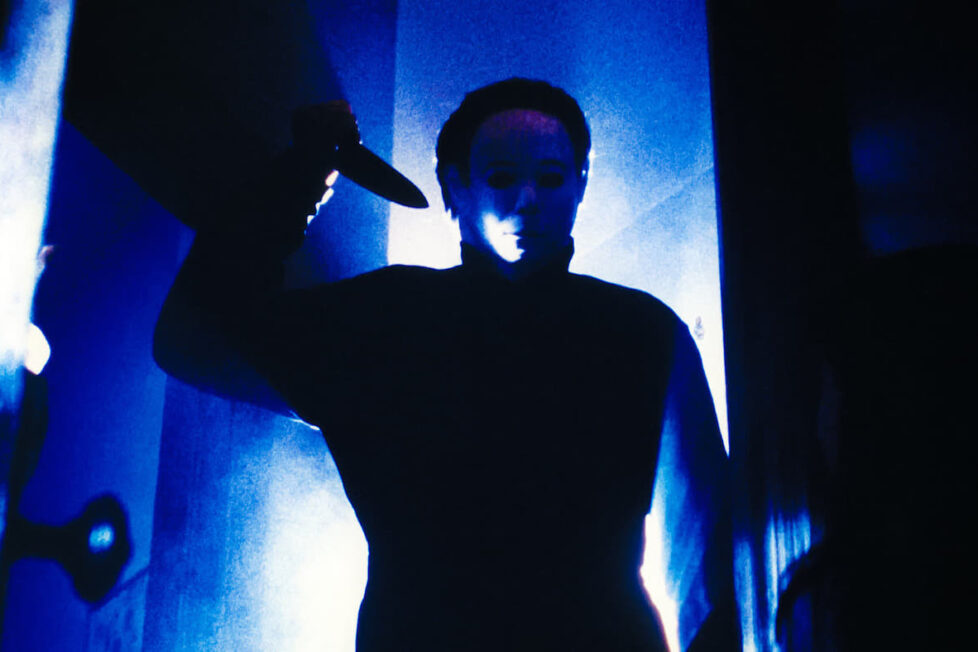
10 years after his original massacre, Michael Myers awakens on Halloween Eve and returns to Haddonfield to kill his seven-year-old niece.


“Apocalypse. End of the world. Armageddon. It’s always got a face and a name!” says a ragged, rambling preacher offering Dr Loomis (Donald Pleasence) a lift and a mirror to their respective missions in confronting evil in this world. Having just survived an explosive brush with his relentless patient Michael Myers, the once-esteemed psychiatrist looks just as dishevelled as his crazy comrade. Offered a hip-flask, Loomis swigs down bitter acceptance with a strained but genuine smile. The road to damnation stretches on and someone has to soldier forth.
Studios are themselves compelled to chase that spooky white mask and alliterative name, as Miramax and A24 recently contested the TV rights to the Halloween franchise. Now the victors, Miramax, are planning a new multimedia cinematic universe in partnership with rights owners Trancas International Films. Fans regularly argue over whether the latest Halloween is the best or worst thing ever made, but most generally like Halloween 4: The Return of Michael Myers. So is it still worth chasing down like the good doctor?
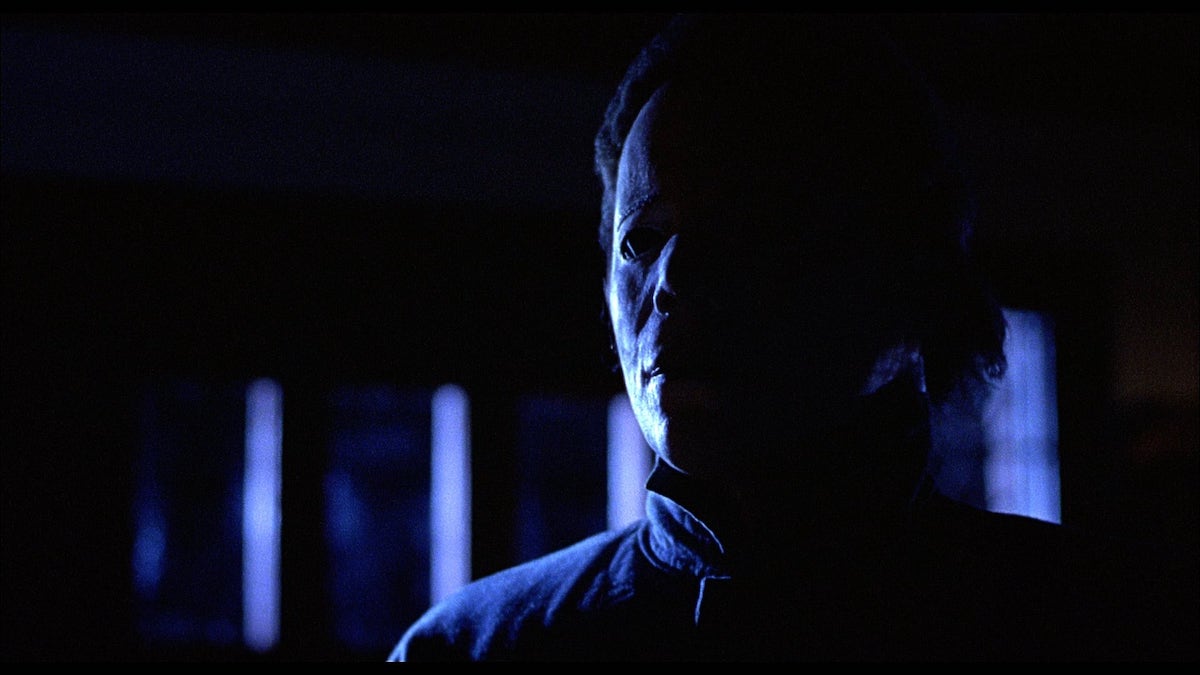
Michael and Loomis were both blown up in the finale of Halloween II (1981). Creators John Carpenter and Debra Hill tweaked the franchise into an anthological with Halloween III: Season of the Witch (1982), with a unique mix of robots, mass child death, and evil occultism, but it left audiences with a lot of questions. The main one, according to producer Paul Freeman, being “where’s Michael?” Carpenter and Hill thus teamed up with Dennis Etchison, the novelist behind Halloween II and Season of the Witch, to write a Halloween 4 screenplay with Joe Dante (Gremlins) in mind to direct. Etchison received positive feedback for his work until a call from Hill, who told him “I just wanted you to know that John and I have sold our interest in the title ‘Halloween’, and unfortunately your script was not part of the deal.” Producer Moustapha Akkad rejected Etchison’s pitched ghost story for being “too cerebral” and demanded Michael return in the flesh.
First time union director Dwight H. Little instead pitched the idea of Michael awaking from a decade-long coma to find his sister Laurie has passed away but that her seven-year-old daughter Jamie (Danielle Harris) is still living in Haddonfield. Alan B. McElroy wasted no time making his screenwriting debut as an impending strike by the Writers Guild of America (WGA) forced him to develop the concept to final draft in under 11 days.
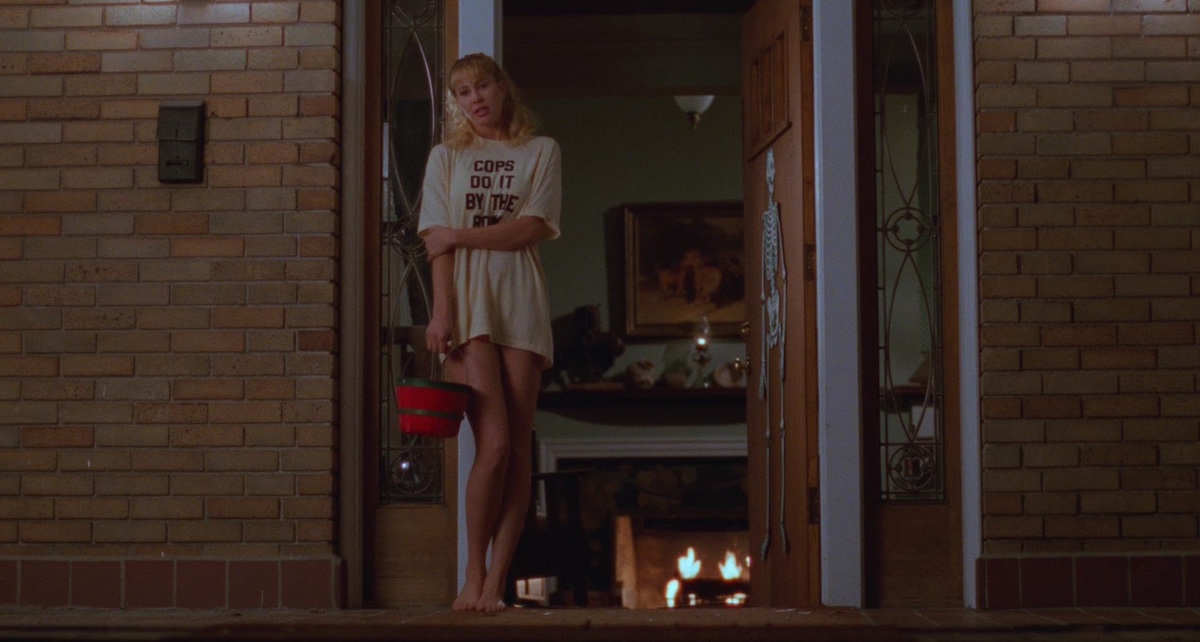
Clerical convenience results in a comatose Michael Myers being transferred on a dark and stormy October 30th. Various employees cover the exposition with dialogue like “both of them nearly burnt to death.” If the storytelling was any more ‘tell don’t show’, Michael would announce “I’m going to stick my thumb in your skull now” before his inevitable escape. Little is capable of building a cozy atmosphere; the opening credits are very different than Carpenter’s synth-y tracking shots, with desolate daytime exteriors effectively painting the aura of a ghost town. Haddonfield is fine but this evokes a haunting aftermath of Michael’s rampage 10 years ago. Unfortunately, a lack of an identifiable theme is apparent on every level.
Halloween 4 is often all atmosphere, no substance. A perfect film to put on during a Halloween party but hardly absorbing on a solitary viewing. Michael’s psyche ward is a boiler room jail cell complete with leaking steam pipes, a place where Freddy Krueger would get his checkups. But then no other locale reaches this silliness with dim houses, quiet streets, and empty schools. The best part of any Halloween-set film is all the costumes and Jamie picks a clown outfit eerily similar to the young Michael from Halloween‘s (1978) famous prologue. But then they have to make it obvious and show a younger Michael in the mirror. This haunted house artificiality is exhibited by the very relocation of Haddonfield from Pasadena, California to Salt Lake City, Utah. They shot during March and had to import autumnal leaves and paint squash oranges for pumpkins.
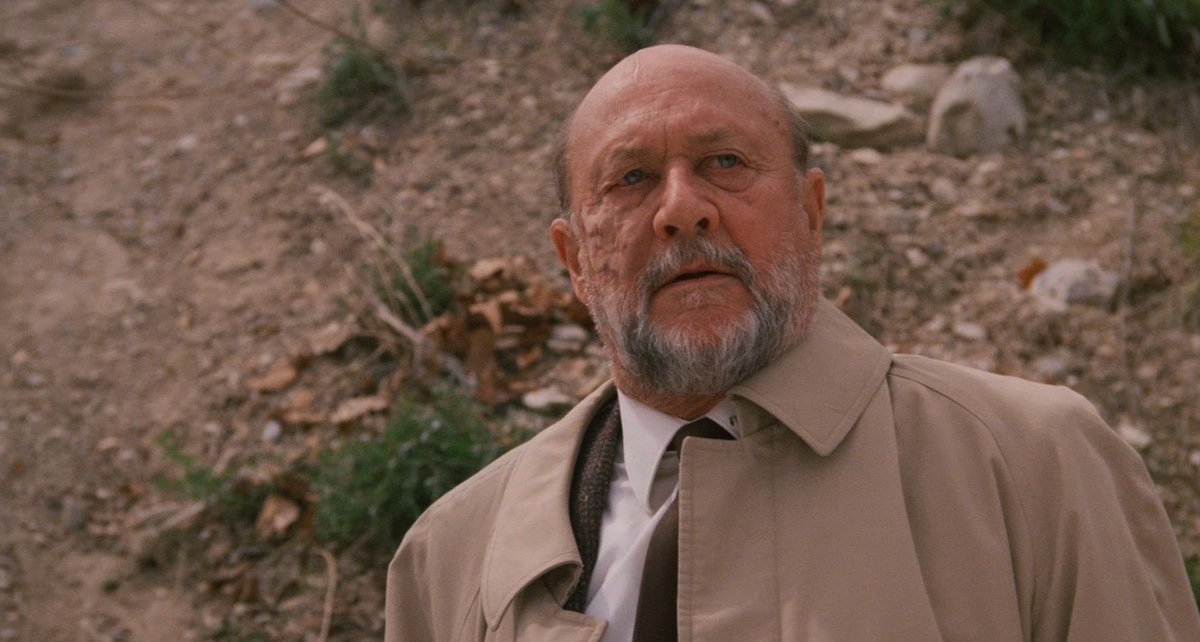
There is authenticity to be found in Halloween 4. 11-year-old Danielle Harris delivers an affecting feature debut that forged a Scream Queen career. The cast and crew ensured they would go easy on her with actor George Wilbur removing his Michael mask after takes to remind her it was all just make-believe. Harris unsettles me more than anything else in this film. She understood the assignment with a script calling for a little girl to believably scream in relentless terror that someone was about to murder her.
Jamie doesn’t have much of an arc here, and her vivid nightmares evolved to psychic visions for Halloween 5: The Revenge of Michael Myers (1989) and the less said of her role (sans Harris) in Halloween 6: The Curse of Michael Myers (1995) the better. Halloween 4 tries to focus on Jamie without giving her agency and the rest of the cast is forgettable, although older stepsister Rachel (Ellie Cornell) does a decent job carrying the narrative, as does Jamie through her stalk-and-chase sequences. Jamie’s flaky boyfriend Brady (Sasha Jenson), his next available lay Kelly (Kathleen Kinmont), and her father Sheriff Meeker (Beau Starr), fill out the cast and come together quite naturally by the second act.
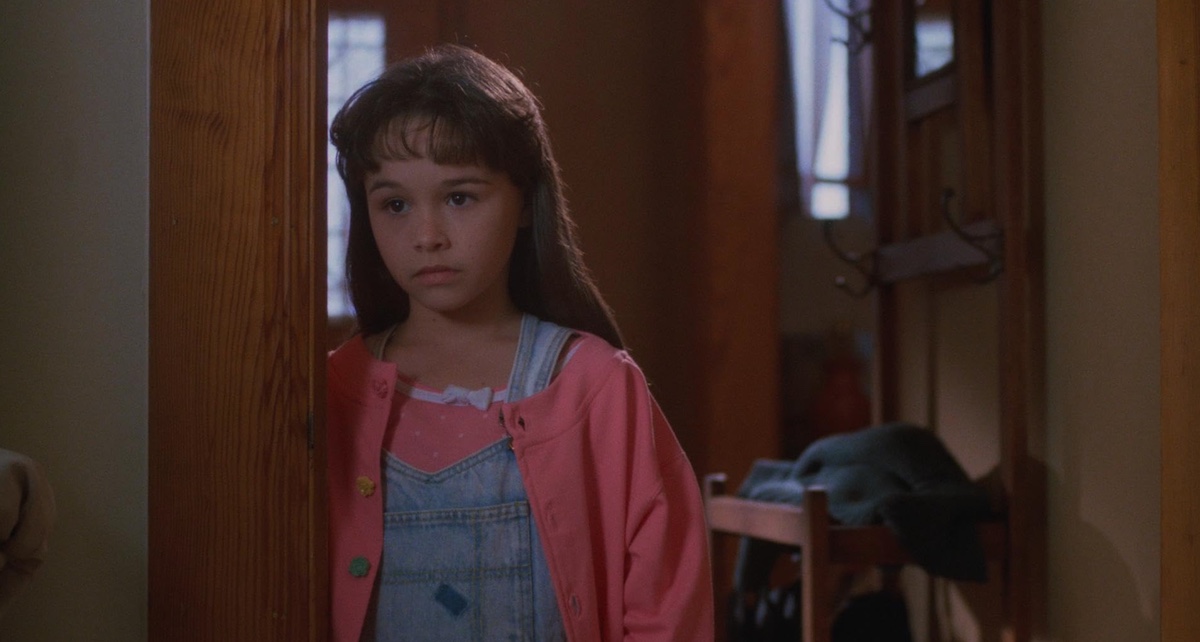
Kelly wears a ‘Cops Do It By The Book’ T-shirt, weirdly enough, but her dad is terrible as he lets Loomis drive the lynch mob into a proto Halloween Kills (2021) frenzy and then dips out of the third act to deal with them shooting a random person. David Gordon Green’s sequel was consistent in it’s stupidity, as things just don’t make sense in this one. A fake-out scare involving three Michael Myers’ surrounding the characters proves an obvious prank but Loomis pulls his gun on them… does he think Michael can multiply now?
Donald Pleasence channels Loomis’ spiralling intensity into Shakespearian territory here, refusing to deliver the same performance as before. Other doctors claim “you’re the one that needs mental help” but Loomis and Michael aren’t operating in our reality anymore. During their first confrontation, Loomis drops his cane with a renewed vigour. He draws on Michael like high noon and pleads that even the state troopers have no recourse against him. Despite his commitment in these establishing sequences, there is no final battle between Good and Evil as promised, as Michael throws the old man through a door and Loomis is only part of the firing range that mows down the boogeyman at the end.
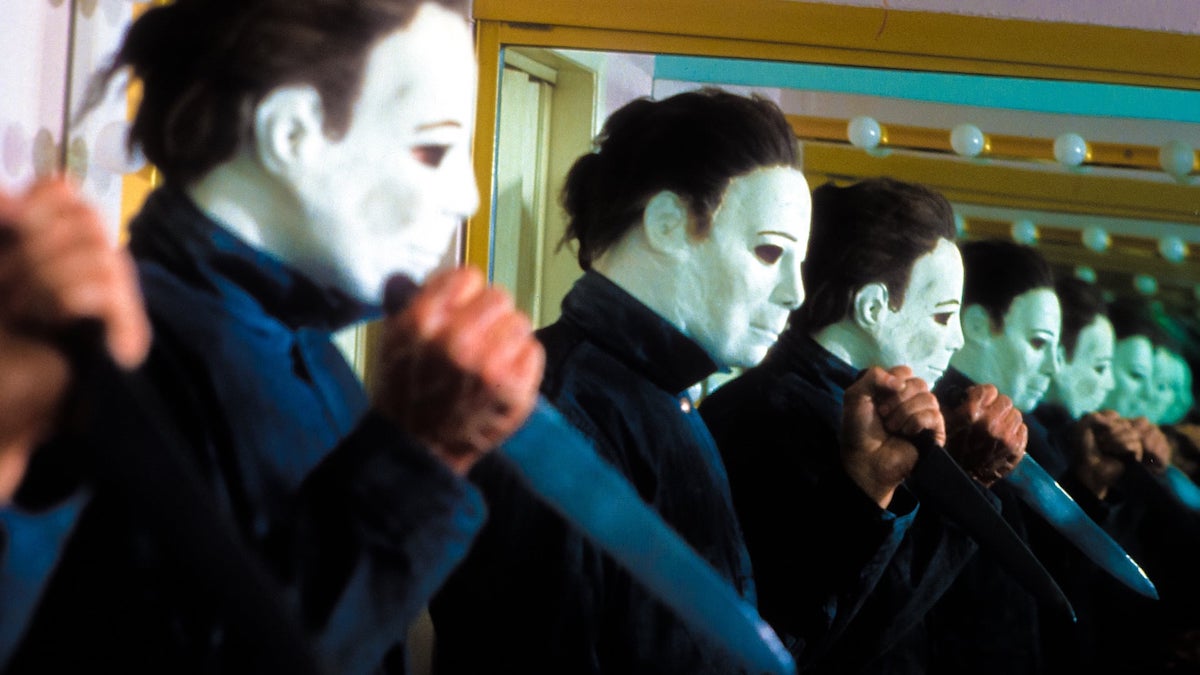
It’s inconsistencies like this that make for an unsatisfying narrative. Michael peeling out with the gas station truck destroying both Loomis’ ride and the telephone lines into town is acceptable, but why does he spend the majority of his Halloween night taking out the power and the entire police force when he’s only after one little girl? Michael can be an aimless force of destruction but at least establish endearing victims beforehand for us to feel something during the carnage.
What sparse violence there is veers into the supernatural as a decade of atrophied muscles has made Michael stronger than ever. Girls are impaled to walls with shotguns and guys have their skulls cracked open—all with his bare hands. My backhanded compliment to Halloween Kills has always been that it’s a fantastic Jason film, so why can’t Michael ever be some guy with a knife? The climax to Halloween 4 features the ludicrous sight of Michael emerging from underneath a moving flatbed truck like Spider-Man and stealthily slashing three people right next to one another.
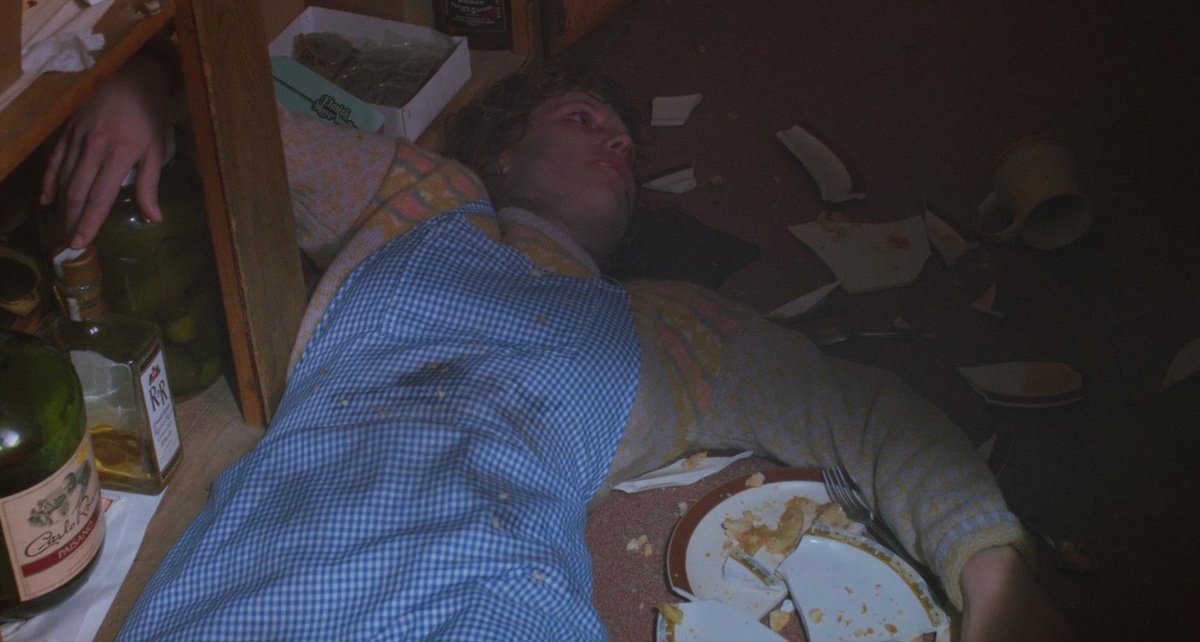
Little later explained his thought process: “What I’m trying to do is capture the mood of the original Halloween and yet take a lot of new chances. What we’re attempting to do is walk a fine line between horror and mystery. Halloween 4 will not be an ax-in-the-forehead kind of movie.” The exposition and suspense leaves little mystery, and what horror they originally shot was lacklustre enough to warrant an extra day of “blood filming” with SFX make-up artist John Carl Buechler (Friday the 13th Part VII: The New Blood).
At one point, Kelly bemoans the blackout during their wait as “at least we’d have some MTV” and it struck me this movie is noticeably less hip than the Freddy or Jason sequel offerings from around this time. This is more like a PBS horror film.
All nitpicks and grievances aside, Halloween 4 still goes down easy and appeased audiences in 1988. Its $17M box office gross on a $5M budget didn’t match the success of Halloween’s $47M or Halloween II’s $25M, but it was marginally better than Halloween III’s $14M… and that’s all that mattered. A sequel simply had to follow the shocking twist-ending of Jamie re-enacting her uncle’s bloody origins, but it didn’t pick up that thread, maybe because nothing in this storyline suggested an ounce of corruption happening to her character. Halloween 4 feels like the arbitrary prelude to what’s now known as the ‘Thorn Trilogy’, but then they had no idea what that Michael was doing during the making of those other two entries either!
USA | 1988 | 88 MINUTES | 1.85:1 | COLOUR | ENGLISH

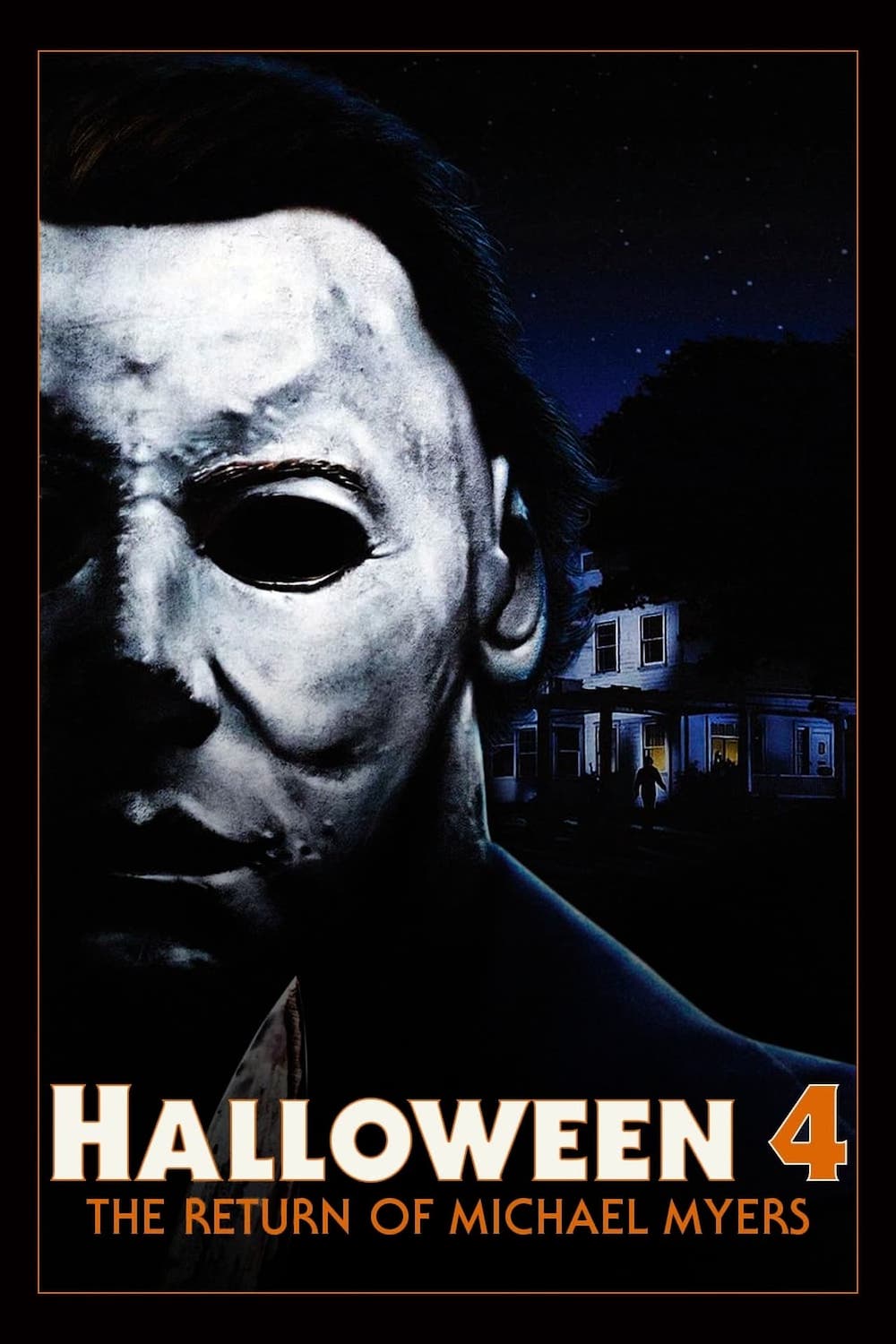
director: Dwight H. Little.
writer: Alan B. McElroy (story by Alan B. McElroy, Danny Lipsius, Larry Rather & Benjamin Ruffner; based on characters created by John Carpenter & Debra Hill).
starring: Donald Pleasence, Ellie Cornell, Danielle Harris & Michael Pataki.
